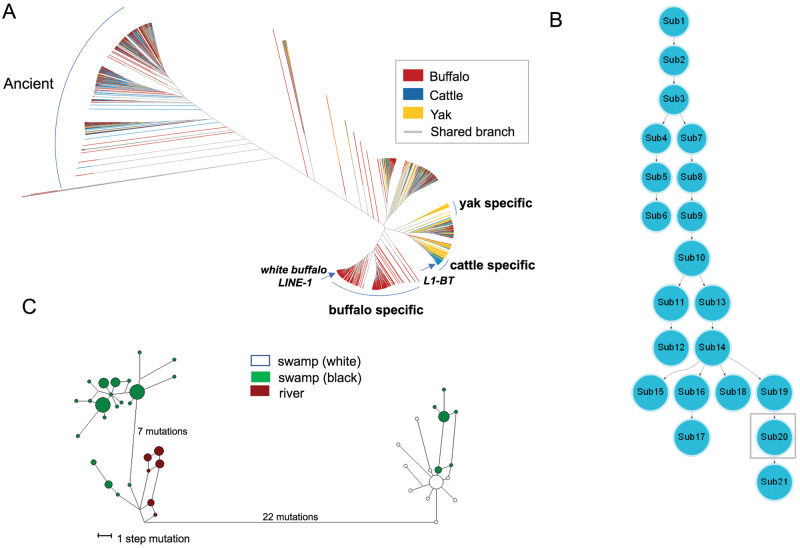Fig. 5.
Evolutionary analyses of LINE-1 elements in the genome and ASIP haplotypes. (A) An approximate maximum-likelihood tree of 6,986 full-length LINE-1 elements in buffalo, cattle, and yak reference genomes. The buffalo includes both swamp and river buffaloes. The clade on the left are LINE-1 copies that are mixed among species and have long branch lengths, indicating that they are ancient and amplified before the split of these species. Species-specific clades are found on the right, in which the buffalo-specific clade contains both swamp and river buffaloes. One arrow points to the LINE-1 clustering with that of white buffalo ASIP and another to the LINE-1 of cattle ASIP (L1-BT). The shared branch is shown in gray color. (B) A minimum spanning tree showing the evolutionary relationship among LINE-1 subfamilies in the water buffalo genomes. The ASIP LINE-1 insertion of white buffaloes belongs to the sub20 subfamily (in the gray square), a relatively young subfamily. (C) Median-joining network of water buffalo ASIP haplotypes. Colors: Green, swamp buffalo; brown, river buffalo; and white, white swamp buffalo.

